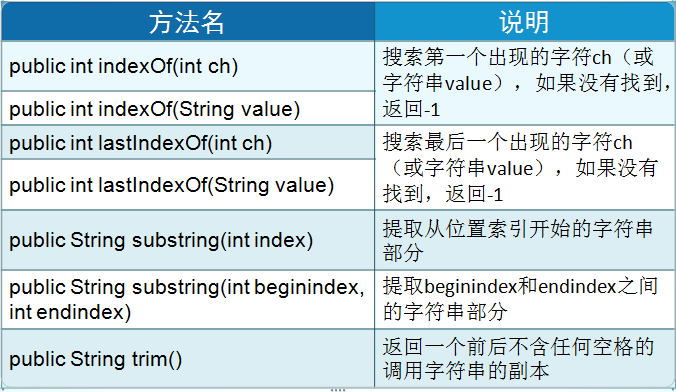一.包装类
为什么要使用包装类?
1.可以实现基本类型之间的转换
2.便于函数传值(泛型时不可以传基本数据类型)
3.在某处用到Object类型是时,方便将基本数据类型转换。
作用:
1.包装类把基本数据类型转换为对象(每个基本类型的数据在java.lang包中都有一个相应的包装类。)
2.提供了一系列的实用方法。
3.集合不允许存放基本数据类型的数据,存放数字时,要用包装类型。
构造方法:
1.所有的包装类都可将与之对应的基本数据类型作为参数,来构造它们的实例。
//所有的包裝类都可将与之对应的基本数据类型作为参数,来构造他们的实例 Integer i = new Integer(12); Double d = new Double(12.1); Boolean b = new Boolean(true); //不分大小写true,否则是false Character c = new Character('a'); System.out.println(i+" "+d+" "+b+" "+c);
2.除Character类外,其他包装类可将一个字符串作为参数构造它们的实例
//除了Character外,其他包装类可以以一个字符串作为参数来构造它的实例 Integer i = new Integer("12"); Double d = new Double("12.1"); Boolean b = new Boolean("true"); //不分大小写true,否则是false //Character c = new Character("a"); 错误的 System.out.println(i+" "+d+" "+b);
3.注意:
1.Boolean类构造方法参数为String类型时,若该字符串内容为
true(不考虑大小写),则该Boolean对象表示true,否则表示false。
2.当Number包装类构造方法参数为String 类型时,字符串不能为null,
且该字符串必须可解析为相应的基本数据类型的数据,否则编译通过,运行时NumberFormatException异常。
Integer i = new Integer(null); Double d = new Double("包装类"); System.out.println(i+" "+d);
常用的方法:
1.XXX.valueOf()基本数据类型转换成包装类(String类型参数时除Character外)
//除Character类外,其他包装类valueOf(String s) intValue=Integer.valueOf("32"); //bool=Boolean.valueOf("true"); bool=Boolean.valueOf("love"); //编译错误 //Character c=Character.valueOf("a"); System.out.println(intValue); System.out.println(bool); System.out.println("*************************");
2.xxValue():将包装类转换成基本数据类型
//xxValue() 将包装类转换为基本数据类型的值 Integer intValue=new Integer(12); int intValue2 = intValue.intValue(); System.out.println(intValue2);
3.toString()以字符串形式返回包装对象表示的基本类型数据
//toString()以字符串的形式返回包装对象表示的基本数据类型 String id = Integer.toString(12); String c = Character.toString('c'); System.out.println(id+" "+c); //和字符串相拼接会变成字符串的形式 String sex='男'+""; String num=99+""; System.out.println(sex+" "+num);
4.parseXX():将字符串转换成相应的基本数据类型的数据(Character除外)
//parseXX()把字符串转换成相应的基本数据类型数据(Character除外) int parseInt = Integer.parseInt("21"); System.out.println(parseInt);
5.装箱、拆箱。
装箱:将基本数据类型转化为包装类;拆箱:是将包装类转化为基本类型。
//装箱 Integer intObj=5; //拆箱 int value=intObj;
特点:
1.所有的包装类都是final类型、不可以创建它们的子类
2.JDK1.5后,允许基本类型和包装类进行混合数学运算。
3.包装类并不是用来取代基本数据类型的:在基本数据类型需要对象时使用。
String类主要包含:
1.length();获取字符串的长度。
2.equals():比较内容是否相同。
3.字符串常用的提取方法:

4.split():截取字符串()
String words="长亭外 古道边 芳草碧连天 晚风扶 柳笛声残 夕阳山外山"; String[] word=new String[300]; System.out.println("原歌词形式 "+words); System.out.println("拆分后的样式为:"); word=words.split(" "); for (int i = 0; i < word.length; i++) { System.out.println(word[i]+" "); }
5.StringBuffer类;
1.声明:
StringBuffer str1= new StringBuffer();
StringBuffer str2= new StringBuffer("aaa");
2.使用:
sb.toString(); //转化为String类型
sb.append("**"); //追加字符串
sb.insert (1, "**"); //插入字符串
String与StringBuffer的比较:
String是不可变对象
经常改变内容的字符串最好不要使用String
StringBuffer是可变的字符串
字符串经常改变的情况可使用StringBuffer,更高效
JDK1.5后提供了StringBuilder,等价StringBuffer
Math类:
1.作用:提供了常用的数学方法和两个静态常量(E和PI)
2.在java.lang.Math包中
3.常用的方法:
Math.abs(-3.5); //返回3.5 Math.max(2.5, 90.5);//返回90.5 int random = (int) (Math.random() * 10); //生成一个0-9之间的随机数
Random类:
1.在java.util.Random包中
2.产生随机数:
Random rand=new Random(); //创建一个Random对象 for(int i=0;i<20;i++){//随机生成20个随机整数,并显示 int num=rand.nextInt(10);//返回下一个伪随机数,整型的 System.out.println("第"+(i+1)+"个随机数是:"+num); }
操作日期类型:
1.java.uile.Date包中
2.表示日期和时间
3.提供操作日期和时间的各个组成方法。
4.Calendar类
抽象类,java.util.Calendar
用于设置和获取日期/时间数据的特定部分

equals() 和 == 的区别
==比较的是地址值。
equals() 比较的是内容。